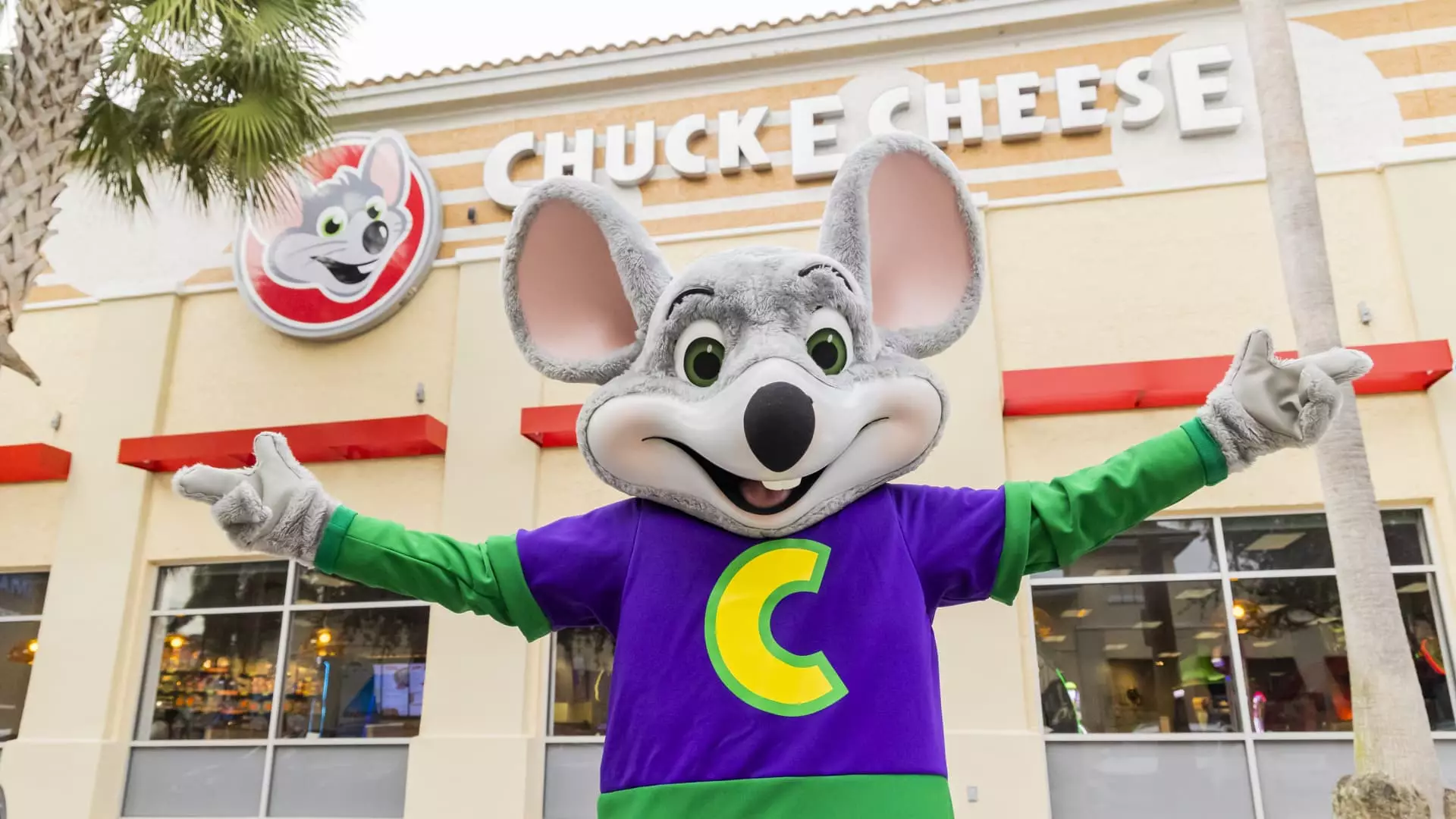Chuck E. Cheese, once an iconic staple of childhood celebrations, has navigated through financial storms and shifting cultural landscapes to rejuvenate its brand. After emerging from Chapter 11 bankruptcy in 2020, the transformation has been nothing short of revolutionary. The company regrouped, shedding an overwhelming $705 million in debt and subsequently ushering in a new era under fresh leadership. That has positioned the brand not merely for survival but for a remarkable comeback tailored to appeal to today’s youth, while still recognizing its cherished legacy.
The pandemic-induced closures brought scrutiny to not just Chuck E. Cheese’s financial health but raised existential questions about the brand’s relevance in an increasingly digital age. As adults grappled with remote work and virtual schooling, children found themselves engrossed in screens, ushering in an era when traditional entertainment faced fierce competition from mobile devices. Understanding these market dynamics, Chuck E. Cheese made bold moves to adapt, investing over $300 million to innovate and remodel its operations fundamentally.
The reimagined Chuck E. Cheese is a far cry from the days of animatronic shows and physical ticket dispensers. Under the guidance of CEO Dave McKillips, the chain has embraced a more contemporary approach to family entertainment. The introduction of trampoline parks, interactive mobile apps, and visually immersive JumboTrons marks a significant shift from the previous blueprint. McKillips, who came from a background in theme park operations, noted that customer engagement today is markedly different from what it used to be, necessitating this extensive evolution in offerings.
Not only did they modernize the physical layout, but the menu also saw a significant transformation. The chain upgraded to offer scratch-made pizzas, aligning its culinary offerings with current food trends that emphasize quality and freshness. Through collaborations with popular brands such as Kidz Bop, Paw Patrol, and Marvel, the chain has integrated kids‘ pop culture into its attractions to better resonate with its young audience. This cross-pollination of branding has not only refreshed the menu but has helped generate buzz around the activities offered, making Chuck E. Cheese not just another entertainment venue but a hub of joyous experiences.
Marketing Innovations and Customer Engagement
Navigating the post-pandemic landscape required strategic marketing pivots. Chuck E. Cheese introduced a tiered subscription model promising unlimited access for families, capitalizing on the growing trend towards value-based spending. For a starting price of $7.99, families can gain access to both food and games at discounted rates, promoting repeat visits. This innovative approach has sparked market interest, with substantial sales indicating an eager consumer base prepared to invest in family-oriented entertainment once again.
Moreover, the revival of birthday celebrations at pre-pandemic levels showcases the effectiveness of the brand’s refreshed marketing. With birthday parties typically being a significant revenue driver, Chuck E. Cheese focused efforts on renewing its image as a prime venue for kid-centric celebrations. This was crucial in reconnecting with parents who grew up with the brand but may have lost interest as adults due to changing priorities and preferences.
While the immediate challenges of consumer spending and competition persist, Chuck E. Cheese’s leadership is focused on long-term growth strategies. The company is not content to rest on its laurels; with over 30 licensing deals already in place for products spanning frozen pizzas to apparel, the brand’s reach is expanding beyond the dining experience. The vision is clear: Chuck E. Cheese as a viable name in entertainment and merchandise.
McKillips envisions a future where Chuck E. Cheese extends its brand narrative through various media, possibly even venturing into a game show format or feature films. This ambition to transcend traditional restaurant boundaries signals an understanding of modern brands as multifaceted entities that exist across various platforms. With a robust YouTube channel in place already, the brand is leveraging digital content to create engaging narratives that capture the imagination of both children and adults alike.
The reinvention of Chuck E. Cheese is a fascinating example of how legacy brands can evolve and adapt in a rapidly changing marketplace. Discovering a sweet spot that blends nostalgia with modernization, the brand is finding its way back into the hearts of a new generation while re-engaging its core audiences. Despite the hurdles that lie ahead, Chuck E. Cheese’s ability to innovate and pivot gives it a promising outlook—one that undoubtedly is only just beginning.

